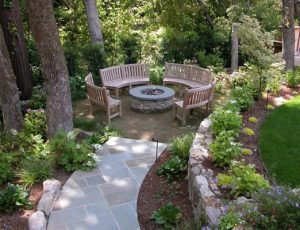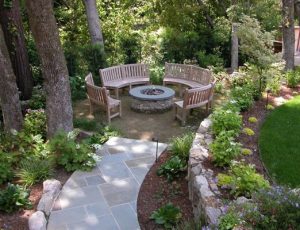There is a lot of misinformation out there that says Biophilic design is solely about introducing vegetation into the built environment. Whilst that is a nice idea and certainly important, it is not totally correct.
So where did Biophilic design come from?
In 1984 E.O. Wilson introduced and popularized the Biophilia hypothesis defining Biophilia as “the urge to affiliate with other forms of life”.
His hypothesis suggests that there is an instinctive bond between human beings and other living systems.
So whilst Biophilia is the theory, Biophilic design seeks to reconnect people with the natural environment.

In most cultures, both present and past, observations show us human behavior reflecting a fondness for nature.
For example, tomb painting from ancient Egypt or remains found in the ruins of Pompeii substantiate that people brought plants into their house and gardens more than 2,000 years ago.
The first hospitals in Europe were infirmaries in monastic communities where a garden was considered an essential part of the environment in that it supported the healing process.
So what has happened since then and why have we lost our way?
Rapid urbanization has resulted in dense, over populated built environments dominated by buildings and the hard infrastructure that services them.
Of course, one of the negative outcomes of urbanisation is the exclusion of living elements.
As humans we are increasingly becoming disconnected from nature. In fact we spend 90 per cent of our lives in buildings and that is having a devastating effect on our wellbeing and health, none more so than residents living in residential aged care homes.
Researches in the neurosciences, endocrinology and other fields have scientifically validated the positive psychophysiological and cognitive benefits in Biophilic design intervention, such as a reduction in stress and depression.
Whilst we know that Biophilic design has existed for nearly three decades its use within the field of architecture has not been common practice until now.
So what are some of the things we could consider:
- Indirect experiences of nature, e.g. artistic representations of nature
- Artificial sky
- Virtual reality systems – mimic fish ponds
- Thermal and airflow variability
- Presence of water
- Lighting that mimics morning through to night
- Direct visual connection to nature as well as direct access. Rooms that look out into well designed courtyards or gardens
- Aromatherapy – smells that remind you of the outdoors
- Material connection with nature – timber, colours etc.
- Actual living plants – this also helps clean the air, many can eliminate over 95 per cent of toxins (refer NASA clean air study)
There has been little research undertaken internationally on Biophilic design but there is certainly a solid understanding as to the application of the theory, its principles and processes to the design of the built environment.
The imperative role the built environment plays in resident health, well-being and quality of life is well recognised.
We understand the importance of how people interact with their environment and consequently how their environment can be designed to better support them. Biophilic architecture needs to play a much bigger role.
Whilst Biophilia remains a relatively new, rapidly growing field of study, having a better understanding of what it all means and how it improves people’s lives is a good start to ensuring that you established an informed brief for your architects and designers.
Debbie De Fiddes is the Founder and CEO of deFiddesign










